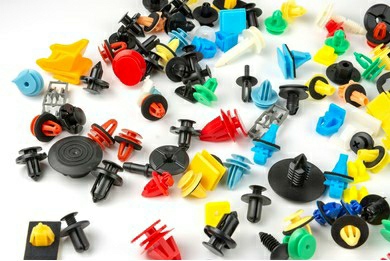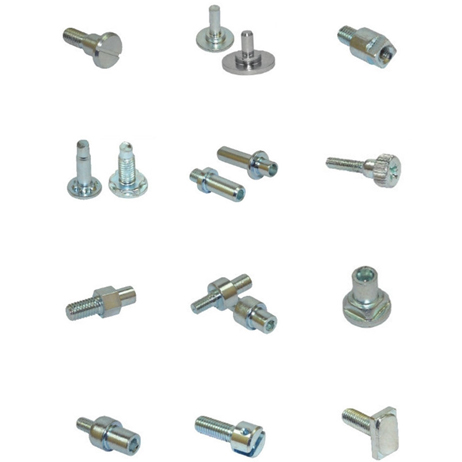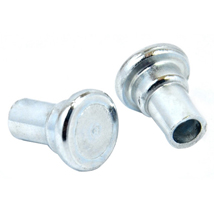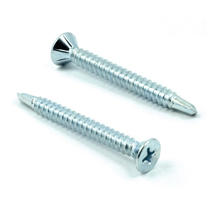Rivets
What is Rivet?
Rivet is the general name given to the fasteners that are used to join more than one part or two different metal or non-metal materials in a way that cannot be removed.
Coil wires processed in horizontal automatic presses widely used in industry; Rivets are formed as a result of shaping with special mold forms and designs.
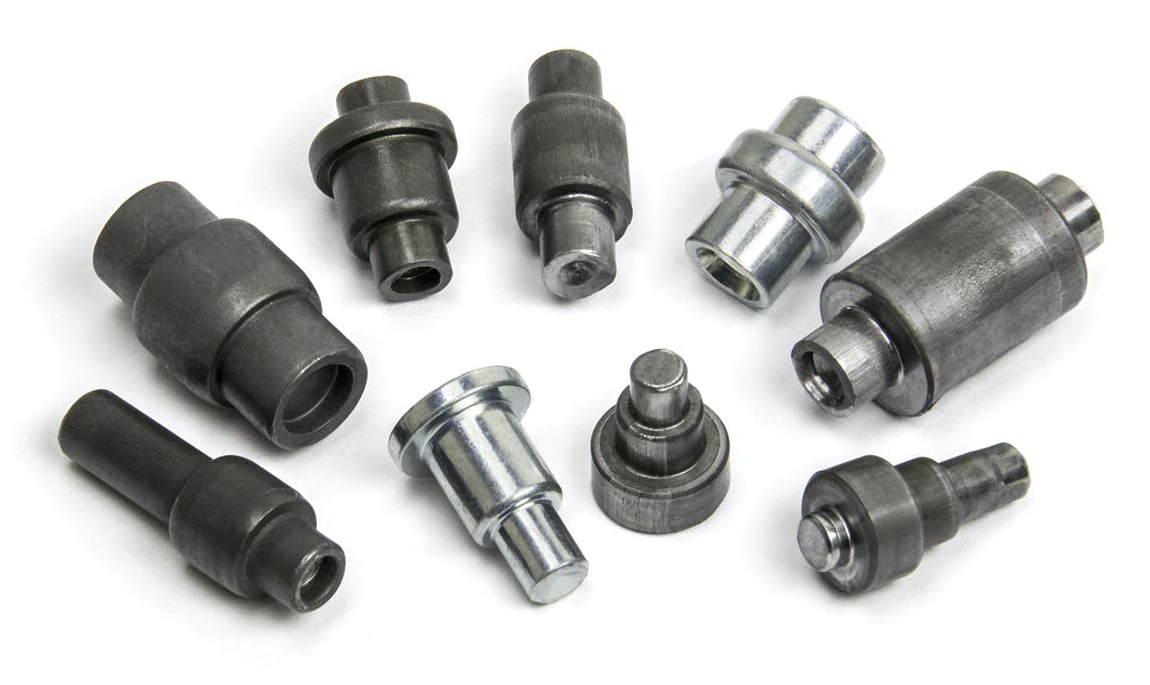
Area of Use of Rivets
Rivet has broad area of sectoral usage It has usage areas such as aircraft construction, building construction, decoration and signage, jewelry art, consumer electronics and tools, woodworking projects, boilers, optical industry, electrical - electronics, white goods, automotive, furniture, defense industry and so on. As a sub-industry product; It has the ability to appeal to all sectors as sub industry product.
Advantages of Using Rivet
- Increase in production speed
- Decrease in costs
- Flexibility in designs
- Durability
- Ease of control and maintenance
- Coloring options according to surface
- Material options are main advantages.
Common Types of Rivets
Rivets come in a variety of shapes and can be classified by material, function and shape.
These forms include blind rivet, countersunk, driven, embedded, friction lock, Oscar, punch, half-drilled, standard solid/round head and much more.
Standard, blind rivets, and countersunk rivets are the most popular forms of rivets in use today.
Countersunk rivets are commonly used where surface smoothness is required.
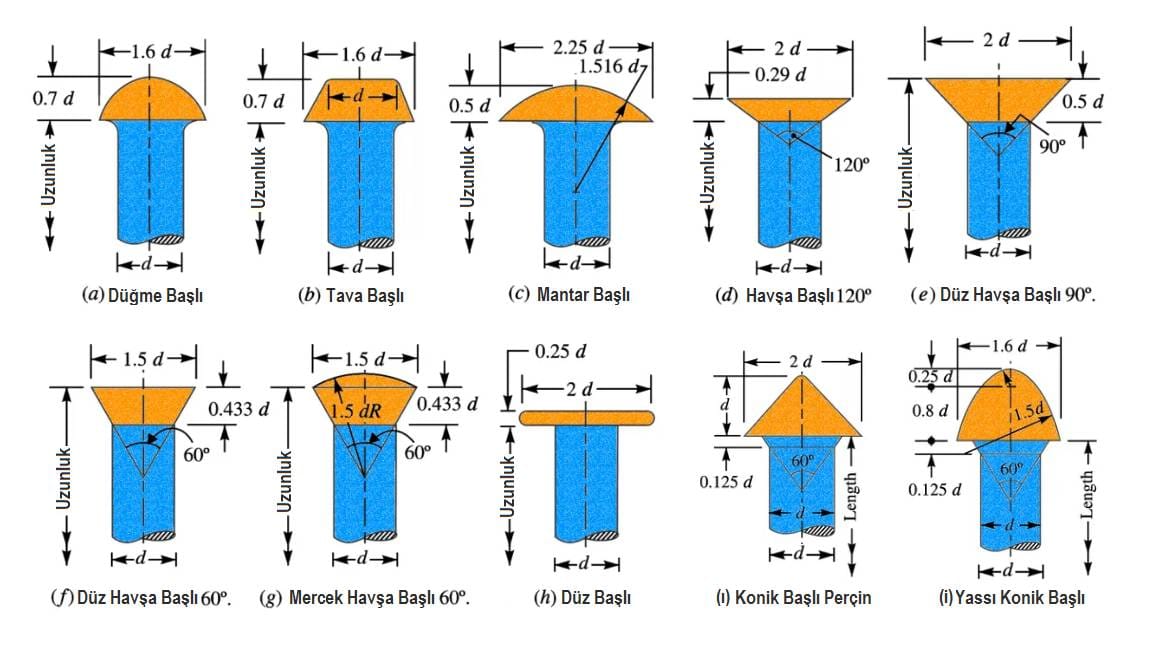
Calculation of Rivet Elements
Multiple rivets are used as single row, double row or multi row to provide the required strength in riveted joining. The rivets can be arranged in a zig-zag pattern In two-row or multi-row riveting.
The rated diameter is practically the diameter measured at half the diameter (e) from the head for rivets. Diameters are determined either by strength calculations or by practical calculations depending on the thickness of the parts. Strength calculations should be applied in tank and steel structures.
Rivets are standardized in TS 94.
In standard tables,
- Rivet rated diameter (d1),
- Rivet head diameter (d2),
- Rivet closing head diameter (d3).
- Rivet hole diameter or Sheet hole diameter (d4),
- Rivet head height (k),
- Rivet head radius (R),
- Rivet free length or Tail Length(l),
- The thickness of the sheets is indicated by (S).
The rivet diameter can be calculated like this for non-important connections:
For thick parts: d1= (S1+S2)/2 (Minimum Rivet Diameter = Sum of sheet thicknesses / 2 )
For thin parts: d1= S (Minimum rivet diameter = Sheet thickness)
The length of the rivet body is usually determined after the determination of the z length, which forms the closing head. The values of z length according to rivet diameter in some rivetings are given as following.
Round head rivet in steel construction: z= (1,51,7).d1
Round head rivet in tanks: z= (1,82).d1
For countersunk rivets: z= (0,50,7).d1
For eyelet rivets: z= 1.d1
Accordingly, the length L of the rivet body is taken in terms of sheet thickness and rivet diameter as follows.
For round head riveting: l= 0.5.(Sheet laminate thickness)+(1.52).d1
For countersunk riveting: l= 0.5.(Sheet laminate thickness)+(0.5~1).d
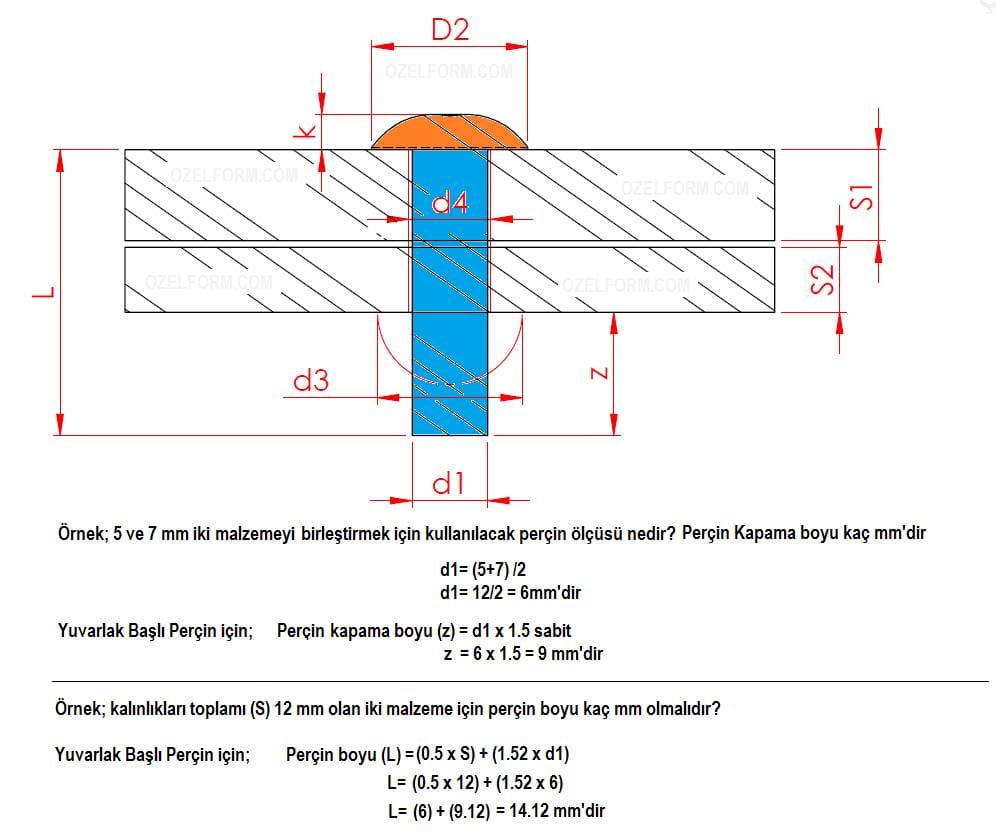
Iron Rivets
Iron Rivets are one of the most preferred fasteners due to their low cost. They are general joining elements that can address many sectors.
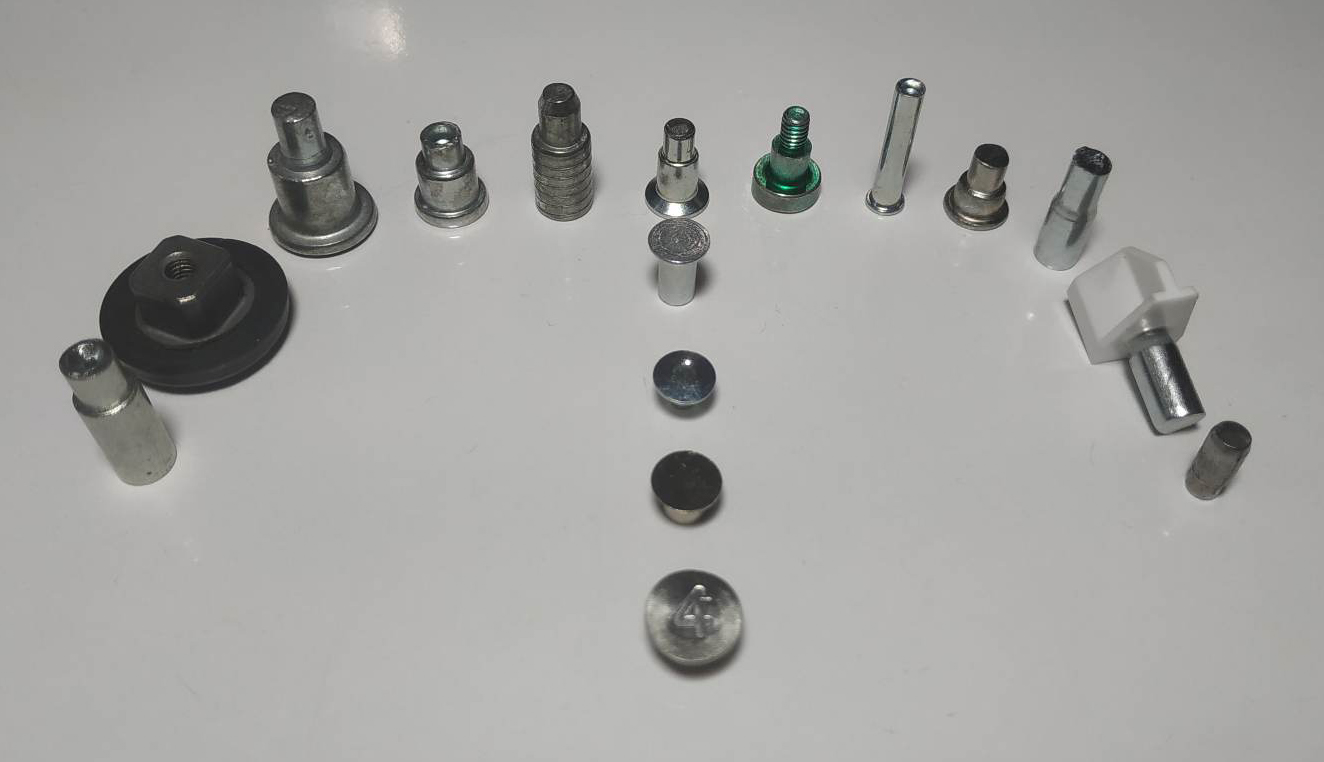
Aluminum Rivets
Aluminum rivets are more commonly used in areas that do not require load, which we call light production, with their easy formability. Its area of usage is increasing day by day Thanks to the hardenability of aluminum, which has been developed with the increasing technology today.
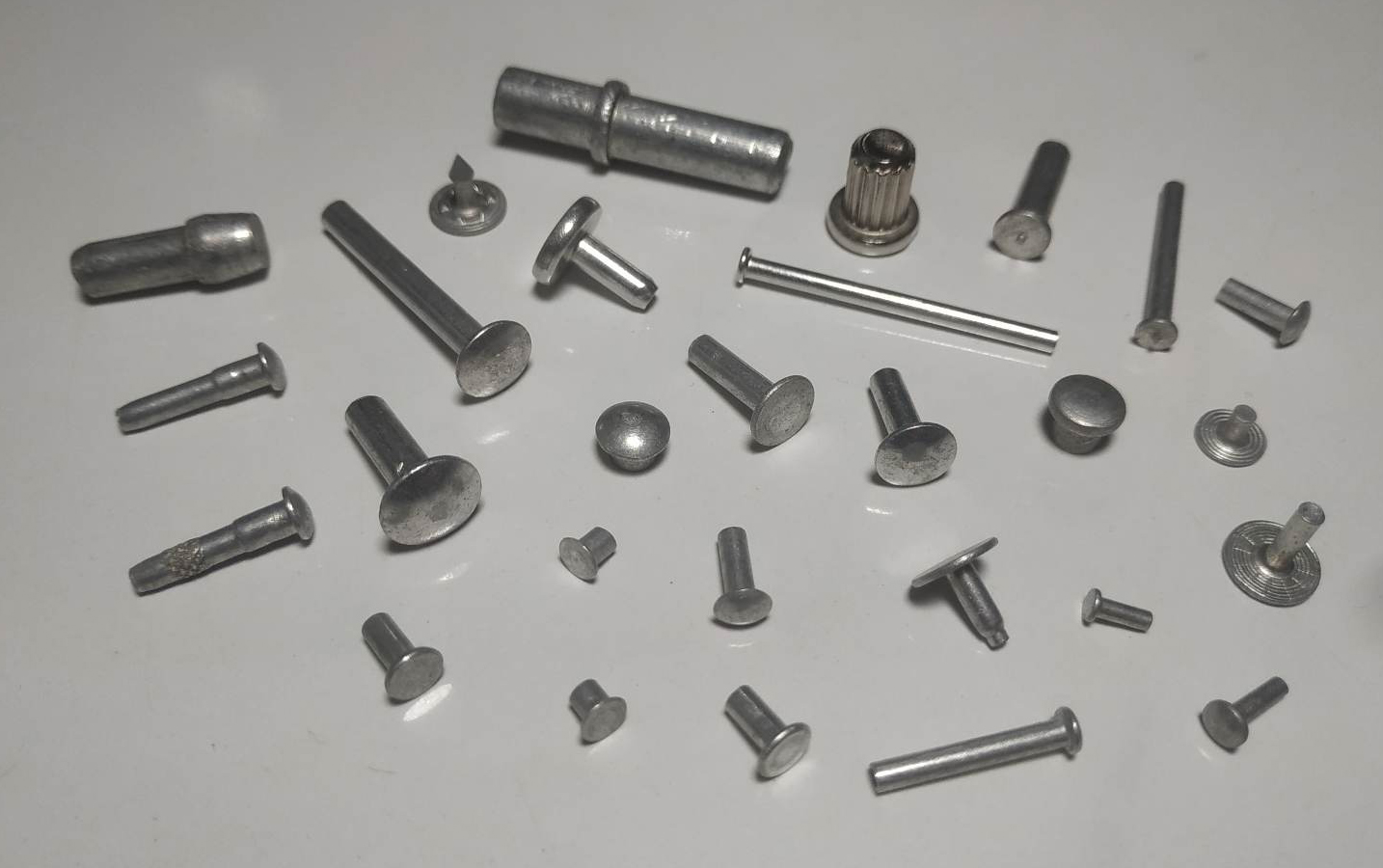
Brass Rivets
It is used in production areas that do not require rust (such as faucets) where human health is at the forefront. They are rivets that can be produced in a wide variety of shapes.
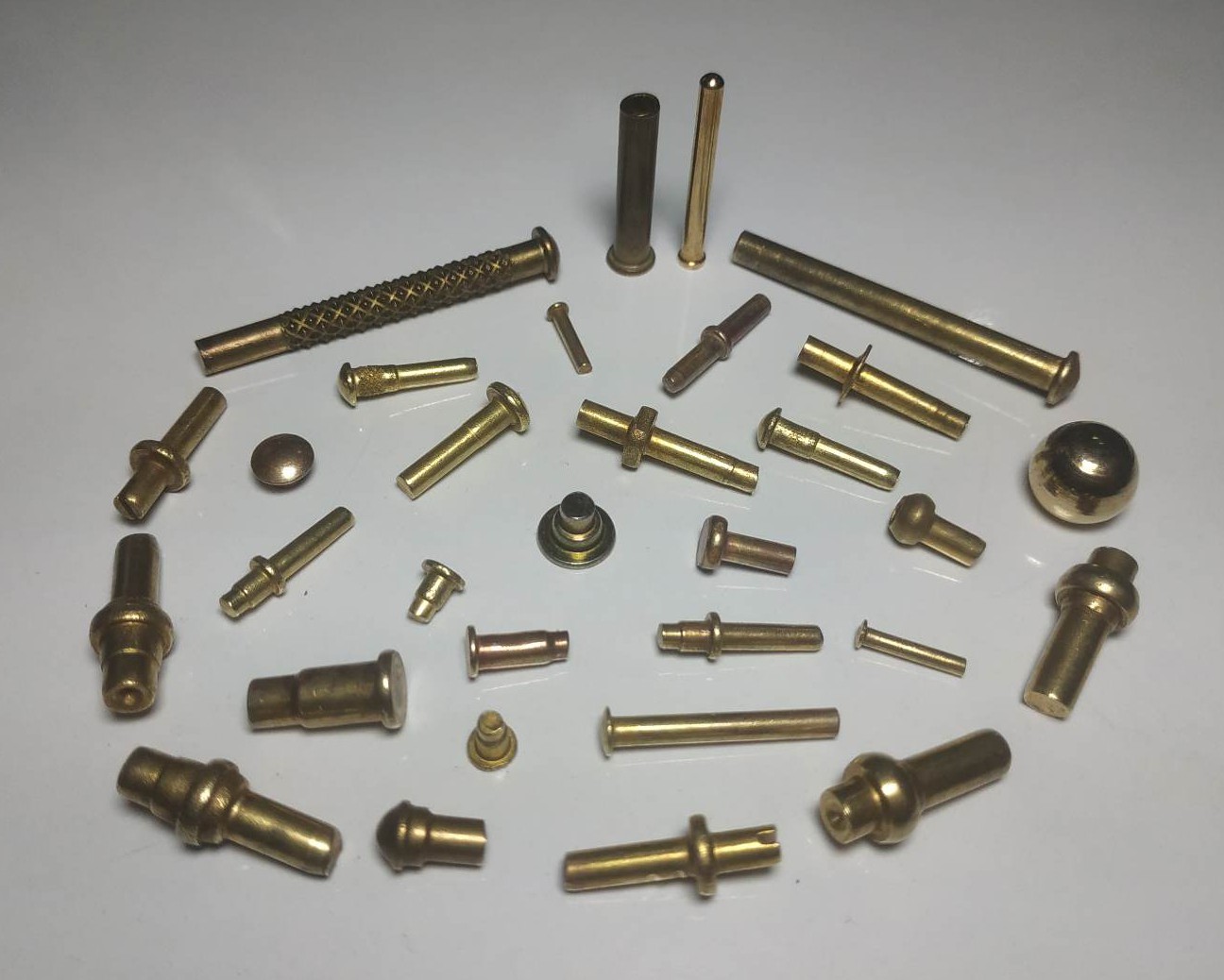
Copper Rivets
Copper rivets are commonly used coupling elements in electrical and electronic productions where thermal conductivity resistance is required. It has metal grate withthe highest value in production. It is a joining element that can be used by adding various designs and printing applications thanks to its easy shaping feature.
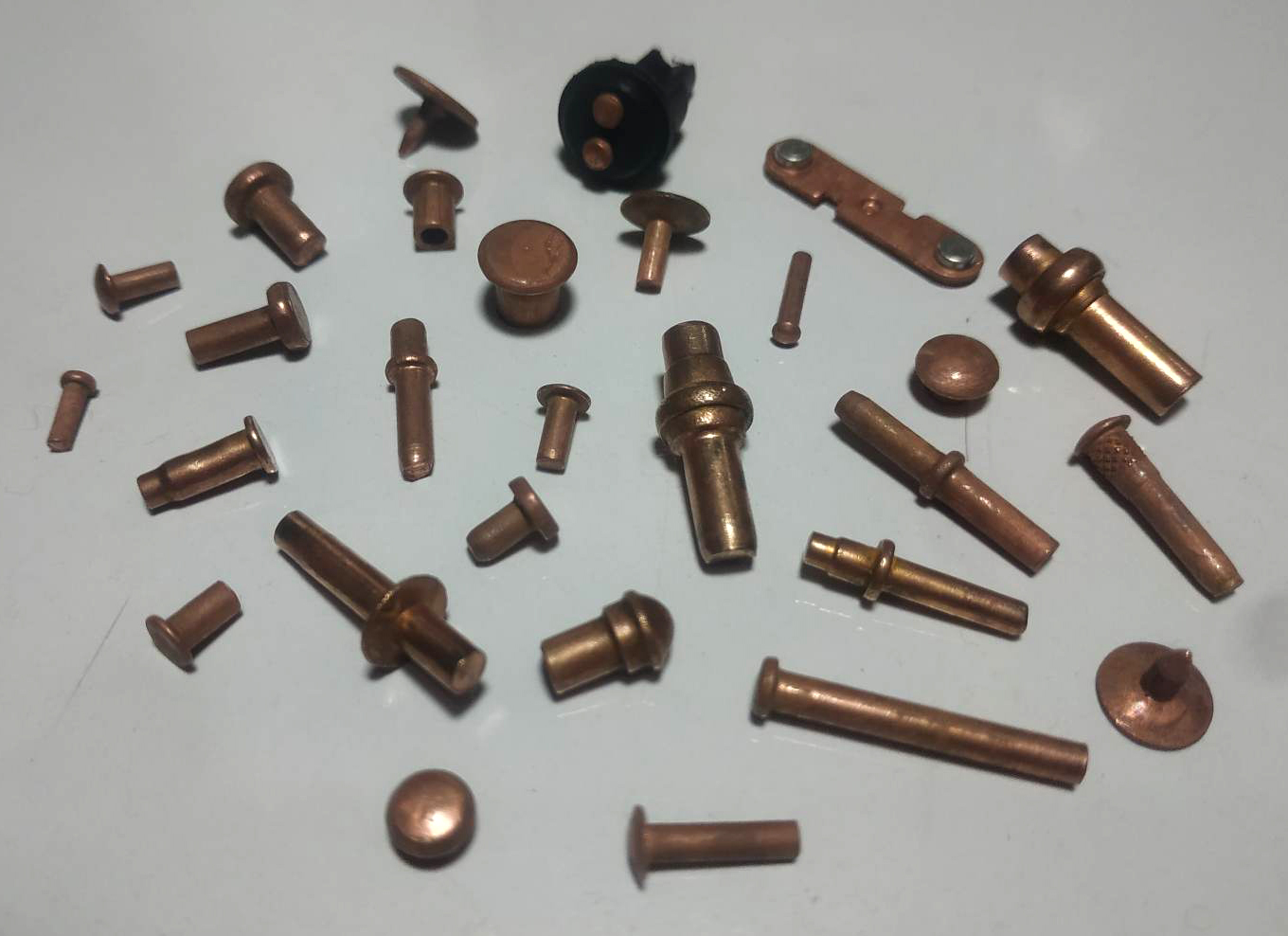
Stainless Rivets
Stainless rivets are an indispensable joining element in production areas where human health is at the forefront and where corrosion resistance against water is required, especially in the production of durable consumer goods. it is in the class of the most expensive and most difficult to process metals when it is evaluated in terms of market value and production.
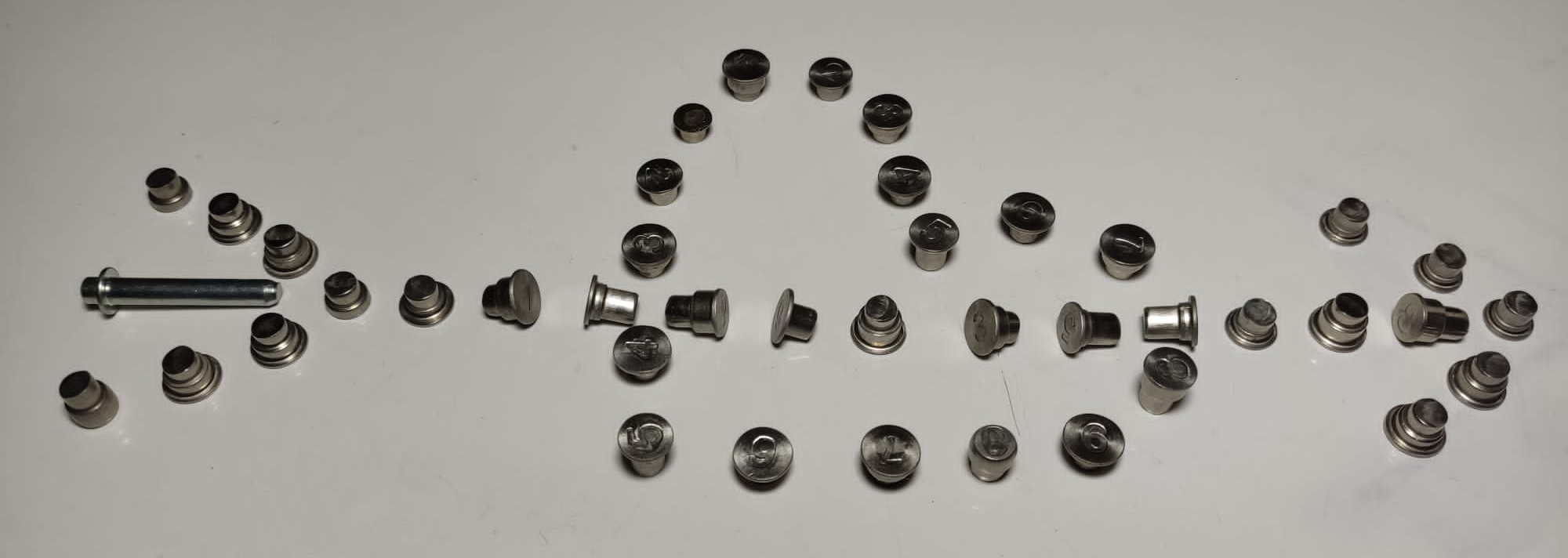
Silver Rivets
Silver Rivet is generally used in electrical contacts, it is a connecting element that provides high resistance to electric current, which acts as a movable contact or electrical - contact circuit breaker.
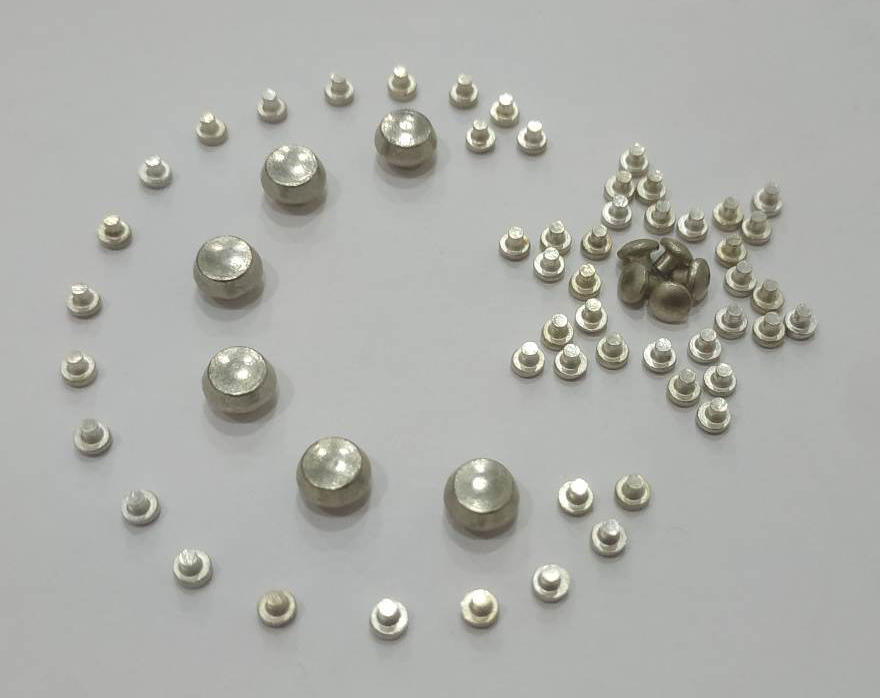

Steel Rivets
Usually steel rivets are connecting elements used in production processes that require load and certain abrasion resistance is required. They can be produced in the desired hardness according to the place used. The production stage, the type of production to be used, machinery and equipment may vary according to demand.
They can be produced in the desired hardness according to the place where they will be used together with heat treatment processes such as 20 HRC-35.
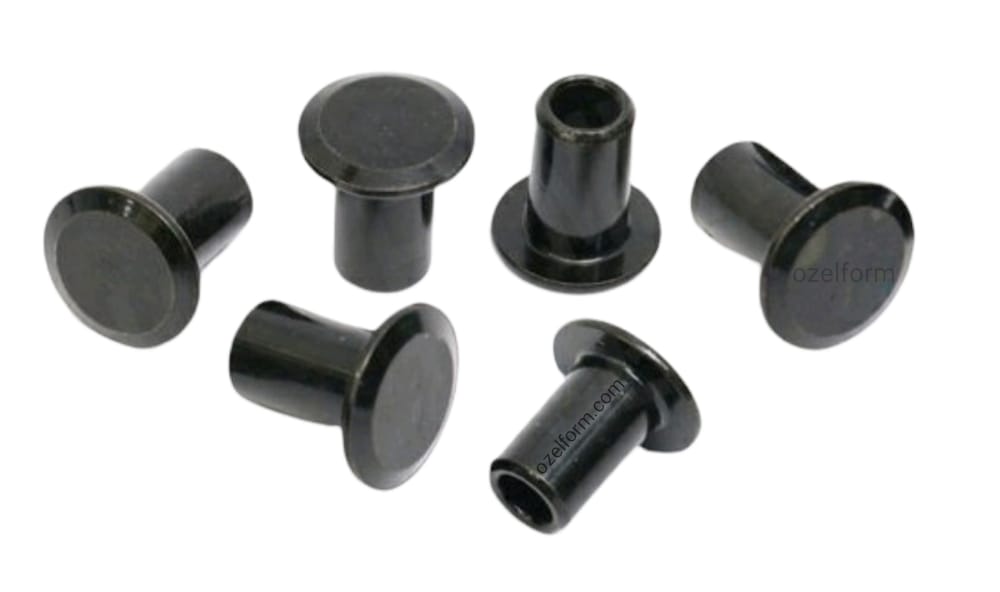
Stepped Rivets
Stepped rivets are generally used in single and double opening systems and wheel components, with mechanisms where two different parts are mounted together and one part is desired to be movable.
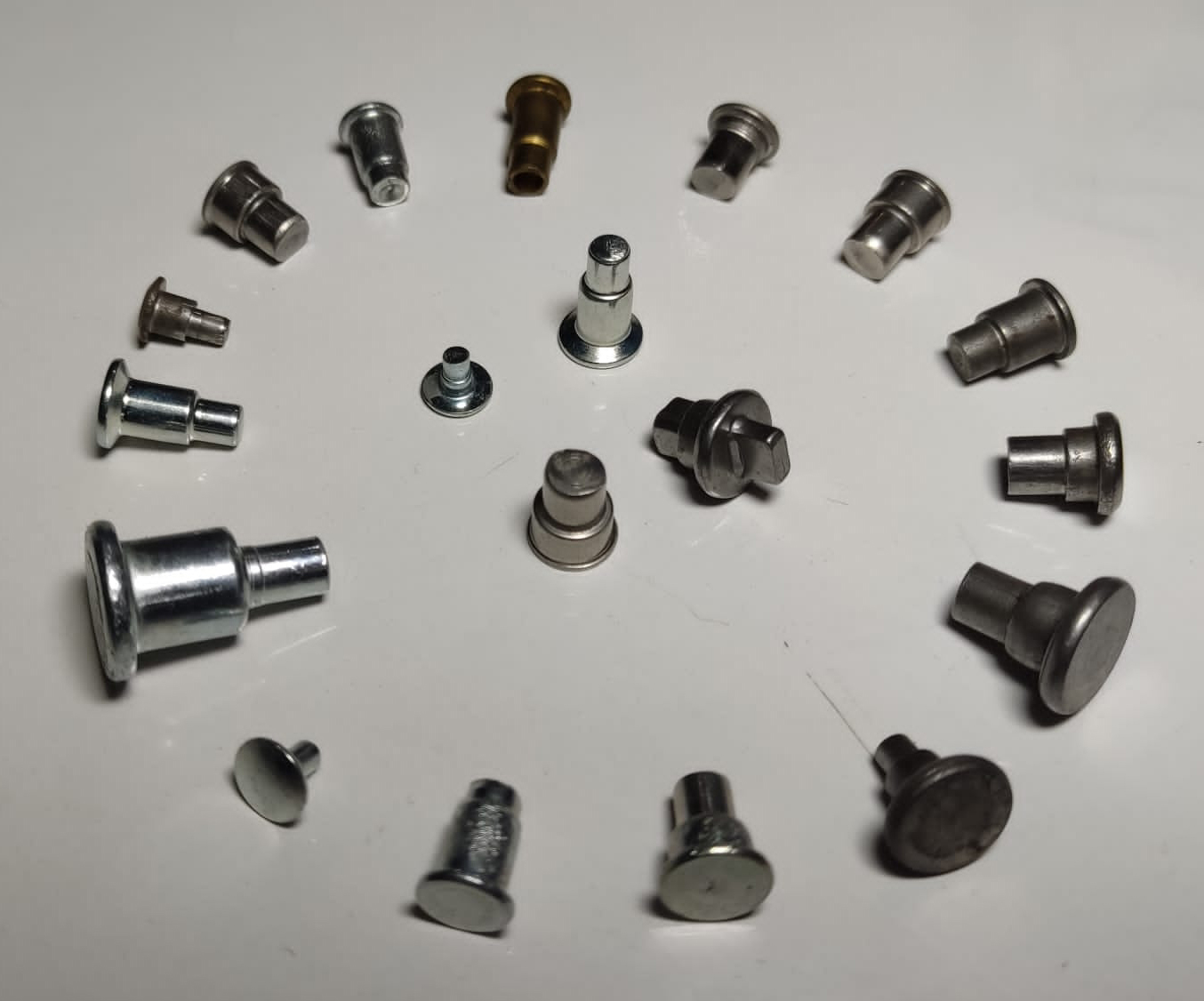
Perforated Rivets
Perforated rivets are the products that are preferred because of the quicker and easier assembly of the products to be produced, and sometimes used as sockets.
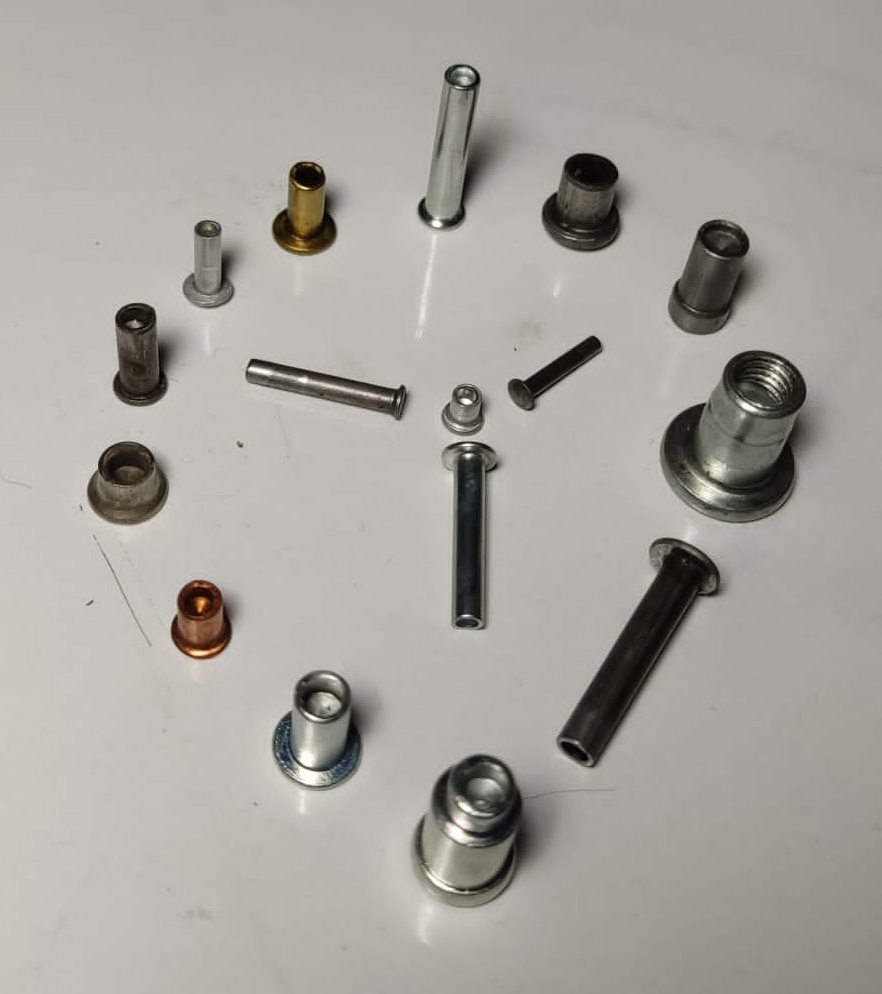
Piercing Rivets
It is used in productions where mass production, easy assembly and low cost are desired. It saves you from additional operations such as the use of drills. Thanks to its easy assembly, you save on additional products such as the cost of screws and nuts used Thanks to its self piercing feature.

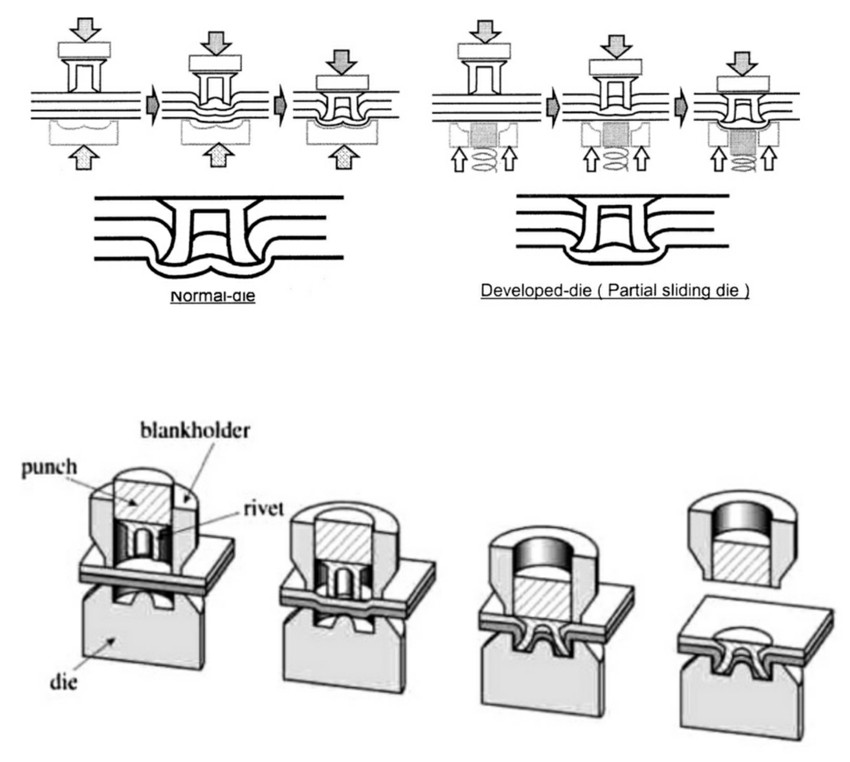
Split Rivets
Split rivets, a type of piercing rivet also known as forked rivets, have unique designs, with split stems or pairs of legs at the smaller ends. The best uses for split rivets are soft materials such as plastic, wood or leather.
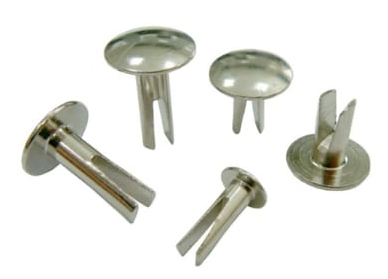
Plastic Rivets
Usage areas of Plastic Rivets is that they are produced to obtain high-strength connections in plastic, wood and many other materials.
They can be applied in consumer appliances, automotive, furniture and consumer electronics.
Plastic rivet materials:
- Low density proplylene (LDPE)
- Polypropylene (PP)
- Nylon
- Acetal
- Polysulfone
Types of Plastic Rivets
- Push Rivets
- Ratchet Rivets or countersunk rivets (Ideal for consumer appliances and electronics, automotive construction and furniture)
- Snap Rivets (Ideal for consumer electronics, retail and signage)
- Three or four tabbed – Non-Pre-Driven Rivets (Ideal for consumer appliances and electronics, construction and furniture)
- Fir Wood Rivets (Coniferous Rivets) - (Ideal for Furniture)
- Countersunk Plastic Rivets etc..
